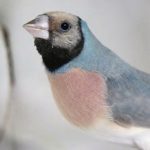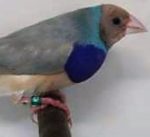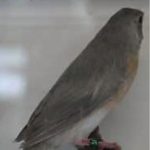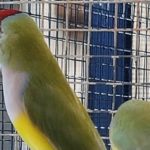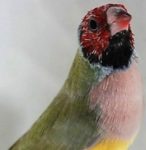The latest Gouldian Finch Mutation to create a frenzy of excitement in Australia is the very sought-after Cinnamon Mutation, which was first bred by Gary Herrick of Melbourne from a pair of split to blue Gouldians that he had purchased locally some eight years ago.
All of the credit must go to Gary for his expertise and dedication to the challenge of developing a new and at times difficult mutation in the weather-challenged city of Melbourne; chilly weather shows no mercy to Gouldians.
This also shows the quality and the strength of the Cinnamon gene that we, as mutation breeders, have been waiting in anticipation for many years, giving us more options to take it further, also developing new exciting colours.
Over my bird breeding years, I have bred Gouldians, Canaries and also Parrots. In those early days we only had access to normal Gouldians, no mutations existed; although many were bred, sadly none were developed. I have no doubt that in those days the Cinnamon was bred plus the Lutino and the Blue as confirmed by the articles from Ray Murray.
With canaries, things were very different. The Cinnamon was one of the first mutations to show its face, already established in France in 1709 and well established in Australia in the late 1960. The canary breeders were aware of the importance of the Cinnamon to their show stock birds, improving the feather quality and also enhancing the size and the genetic strength.
Some of the Cinnamon canary hens that I bred were exceptional in size and feather quality. Because of this Cinnamon improvement to my stock birds, I won my way from novice to open class in just two show seasons.
The Cinnamon is always a sex-Linked Character, regardless of what type of bird you are working with. This Cinnamon Gouldian has appeared because of a spontaneous change in the gene that is responsible for Eumelanin Black; so Cinnamon stops the black pigment from being produced which then changes the colour to brown family pigment – simply the Cinnamon cannot produce black family pigment any more.
This colour change of the family pigment in the Cinnamon also affects the eye colour of newly hatched chicks from black in the normal to a plum colour but does change darker around seven to ten days – the skin colour of the legs changes from dark to a flesh colour. Interestingly, the beak also is a flesh colour and should not go dark when in breeding condition as will the normal Gouldian.
A normal green Gouldian is a Yellow Ground bird. Now if you remove the yellow pigment from a green bird, what you have left is a blue bird (remember when your kids mixed water colours blue and yellow to create green). The same happens with colour in birds. A blue bird is a White Ground bird because the yellow has been removed. Similarly, a Cinnamon is a Yellow Ground bird but once mixed with a blue bird it becomes a Cinnamon Blue which is a White Ground bird.
A Cinnamon can only be one of three types:
1) A Cinnamon Hen – there cannot be split hens, it either is or it’s not a Cinnamon hen.
2) A Split Cock – if put to a normal, will produce cinnamon hens at 50% of hens and split cocks at 50% of cocks bred.
3) A Coloured Cock – if put to a normal, hen will produce 100% split cocks and cinnamon coloured hens.
I think this mutation with all that it has to offer will prove in time to be most helpful when used for the development of better quality birds, also being helpful in the development of other secondary mutations. In my opinion this Cinnamon is a win, win, for us all!
Adieu
Don
Pictures by Gary Herrick
(click to enlarge)
